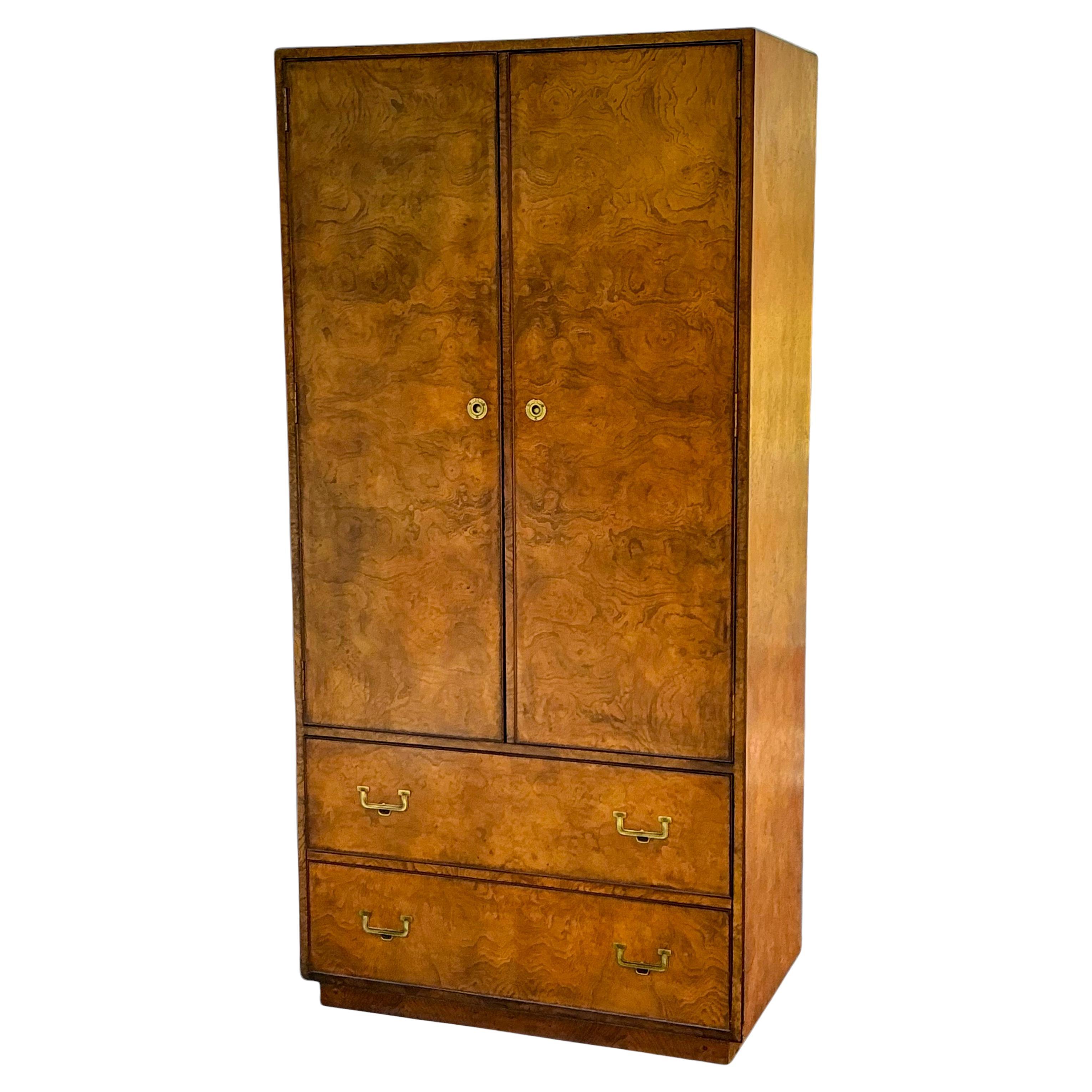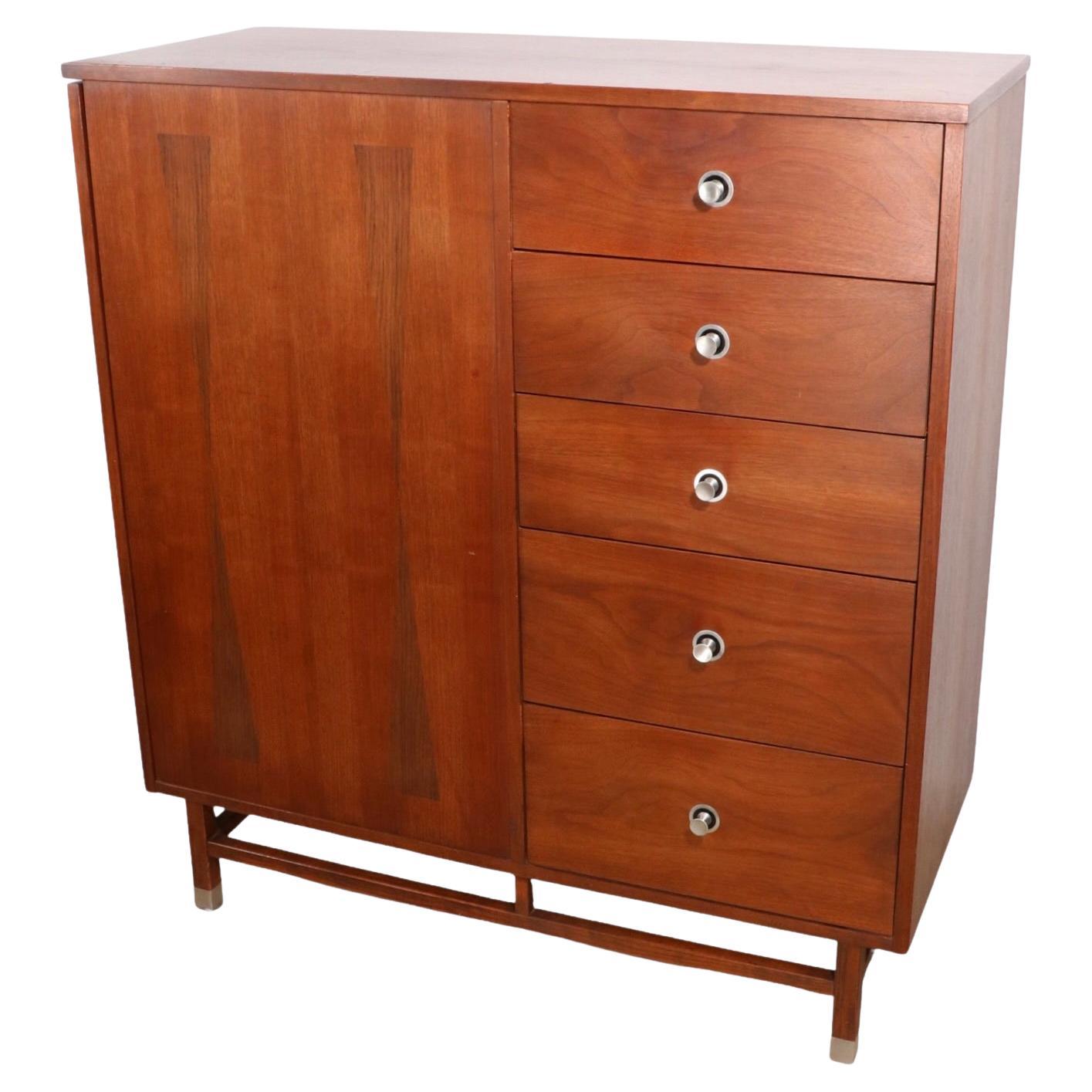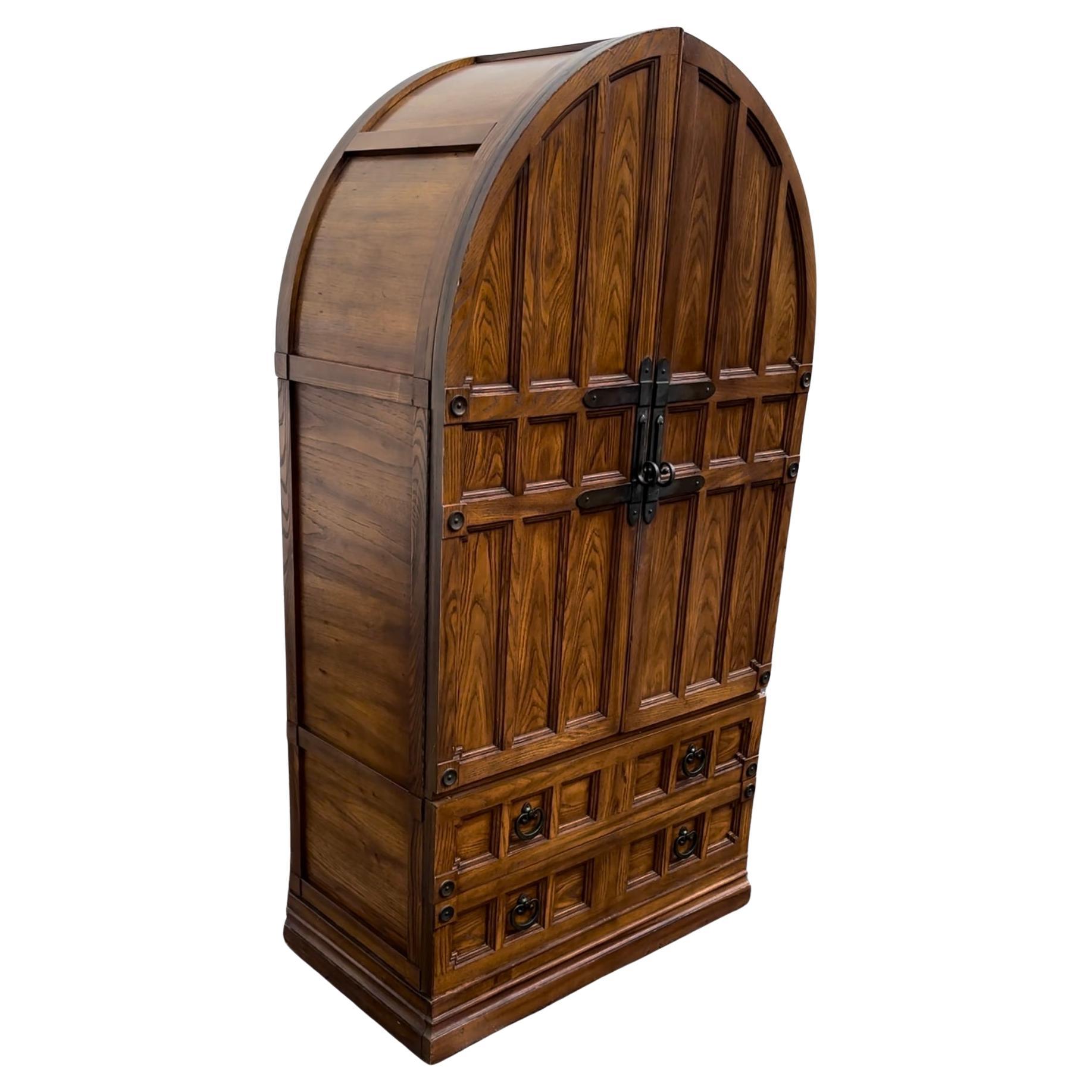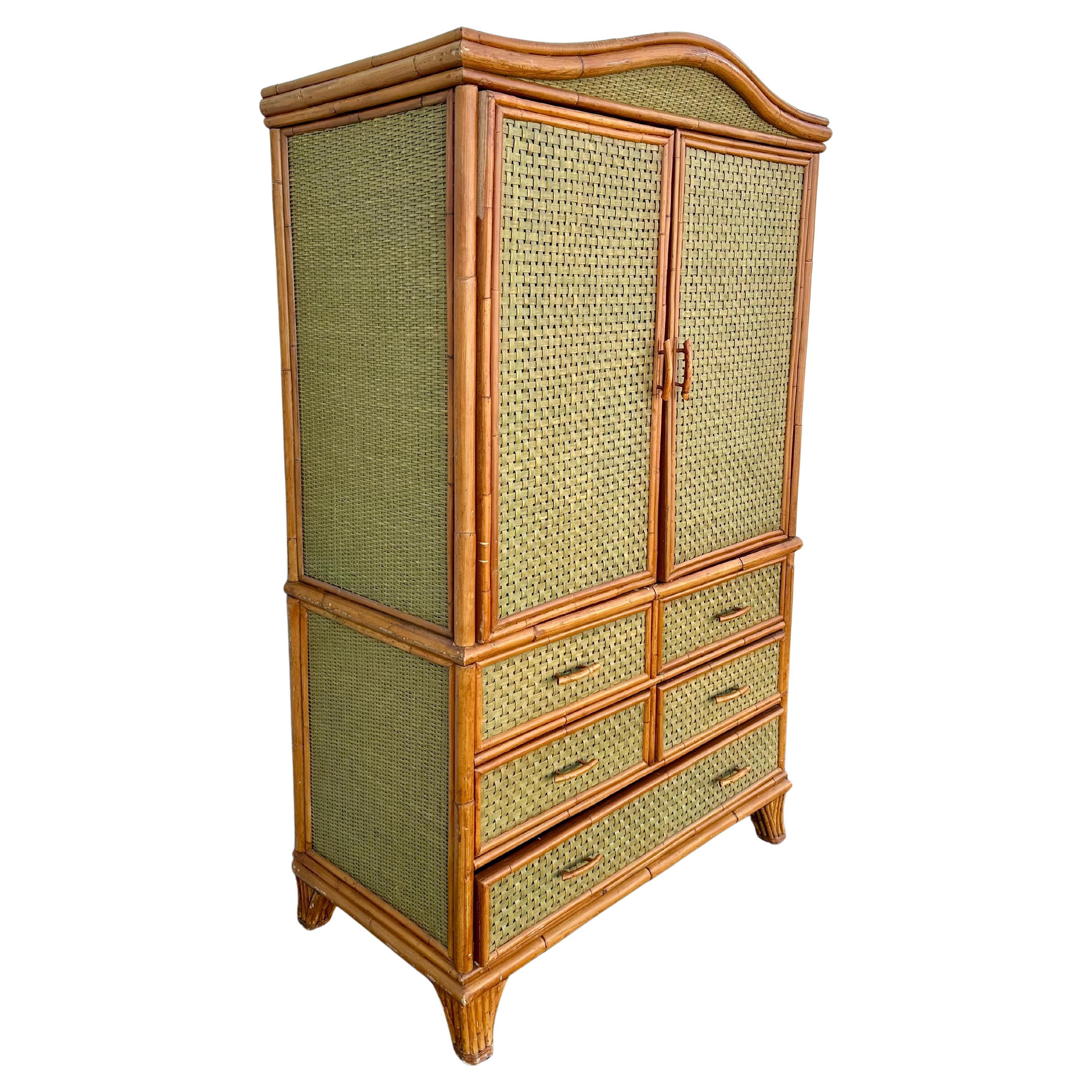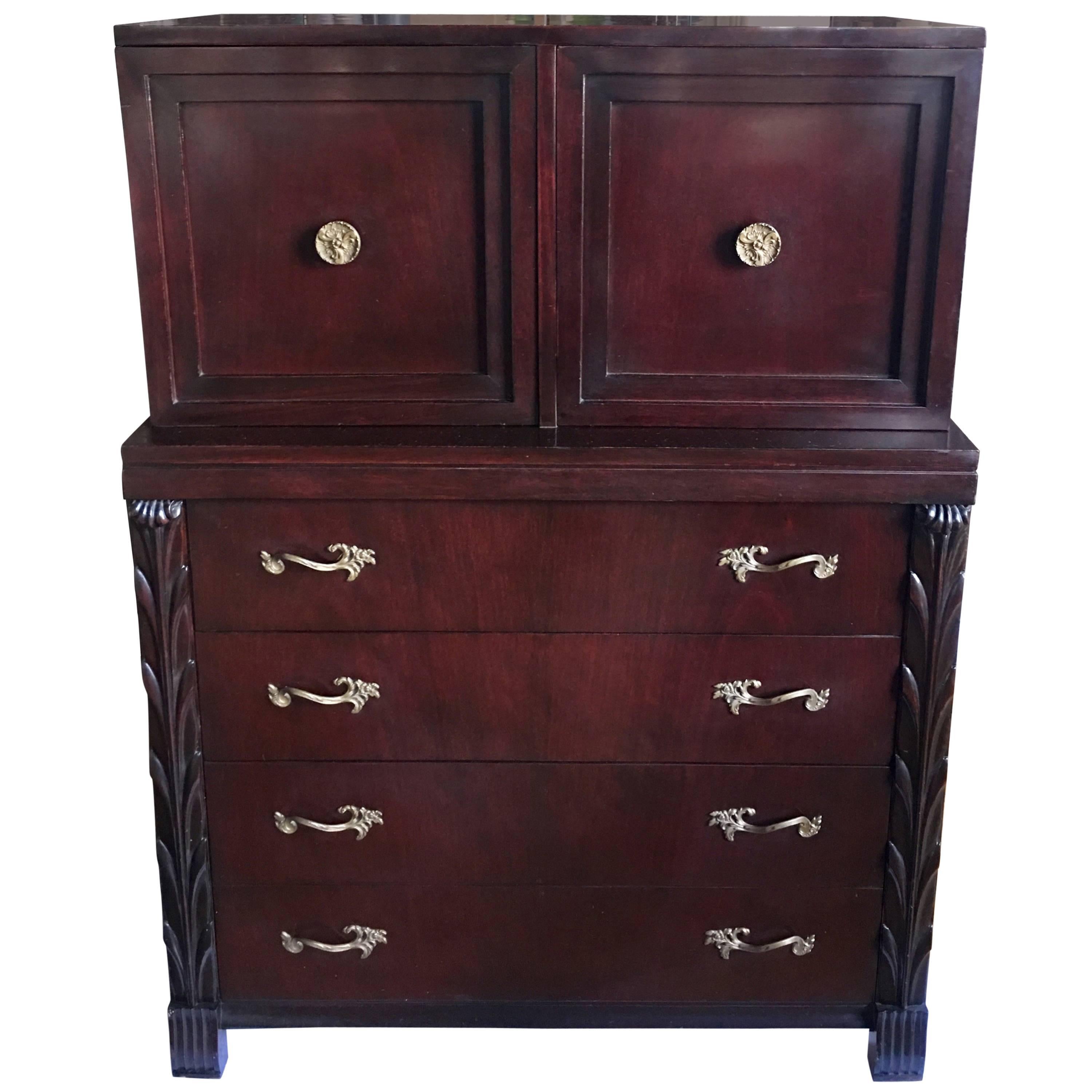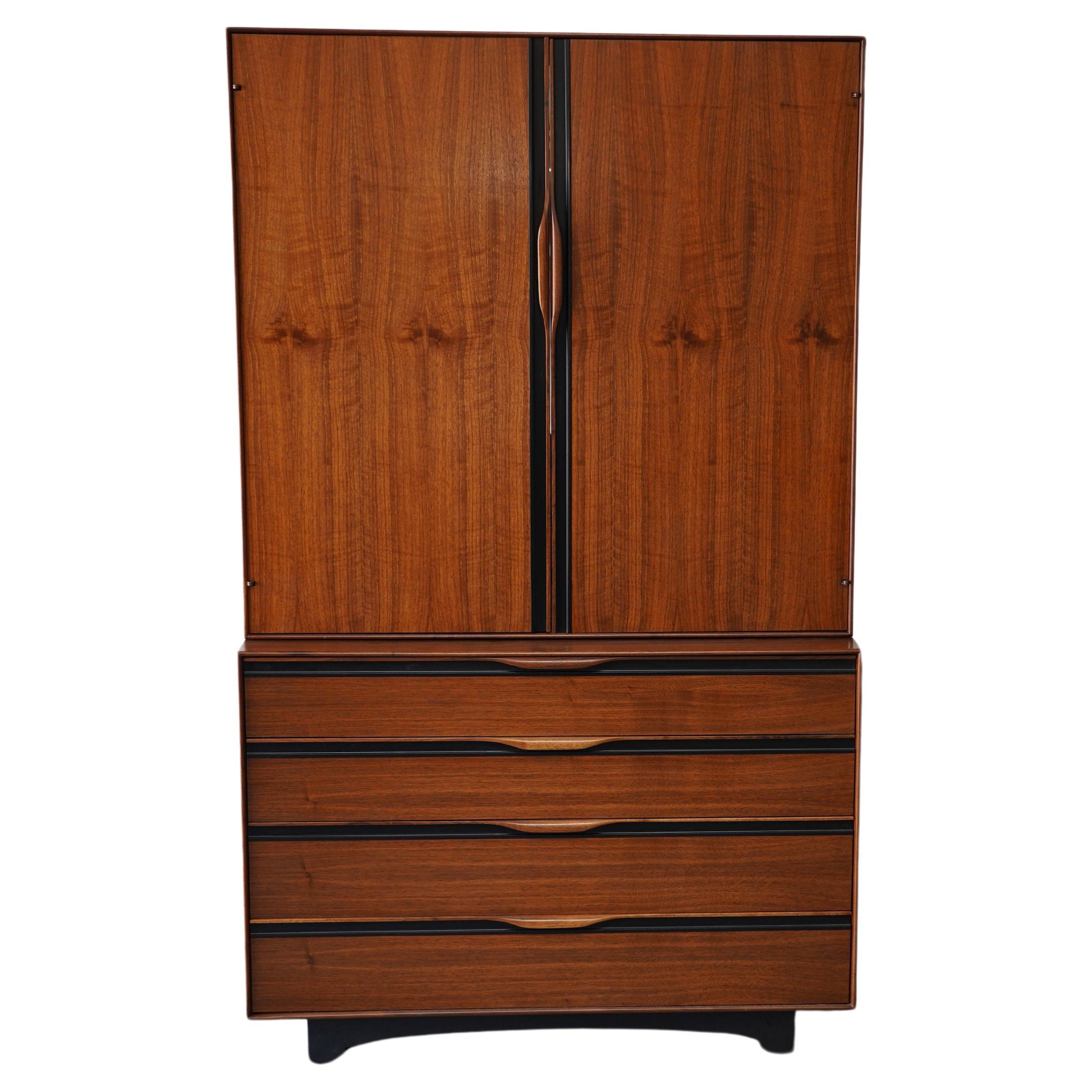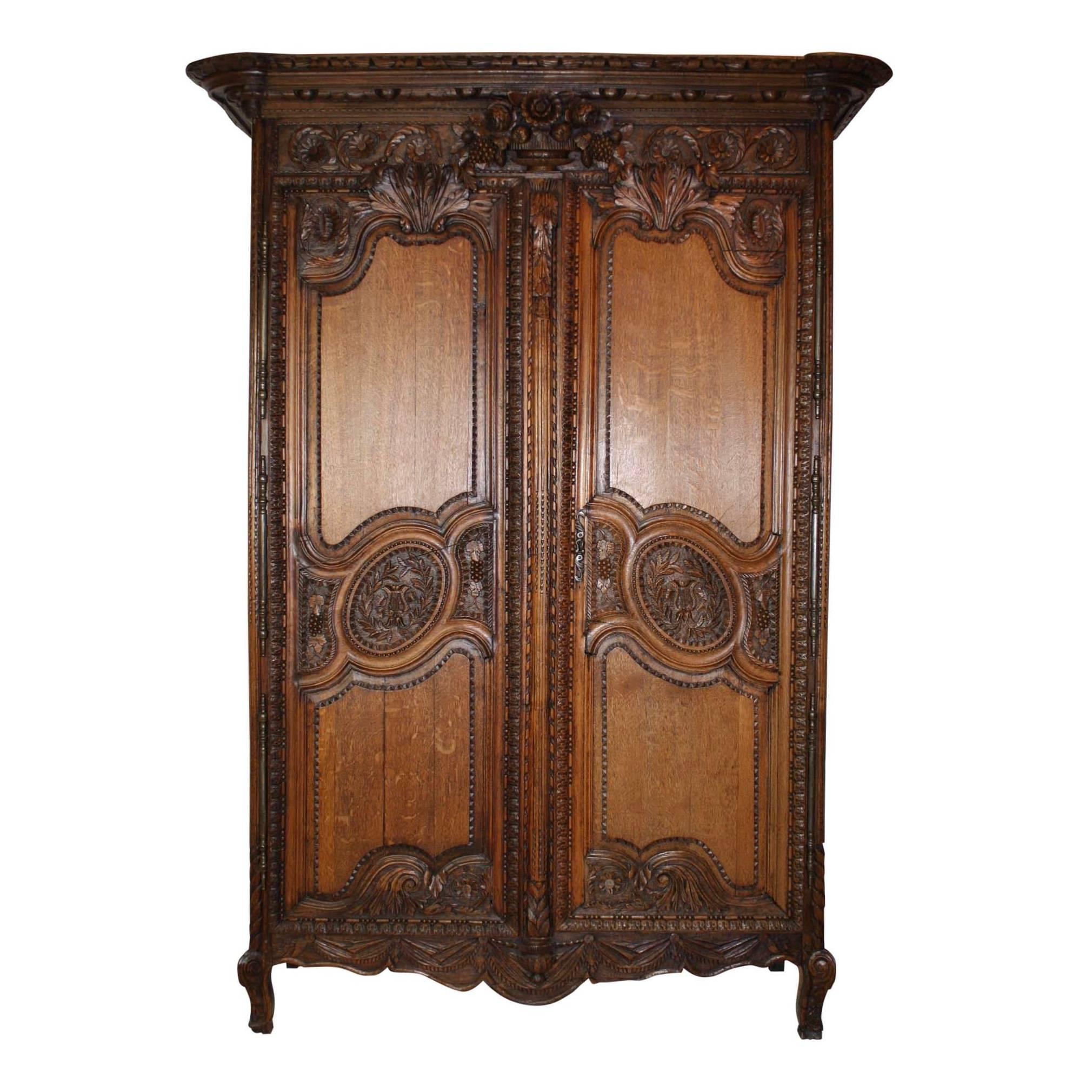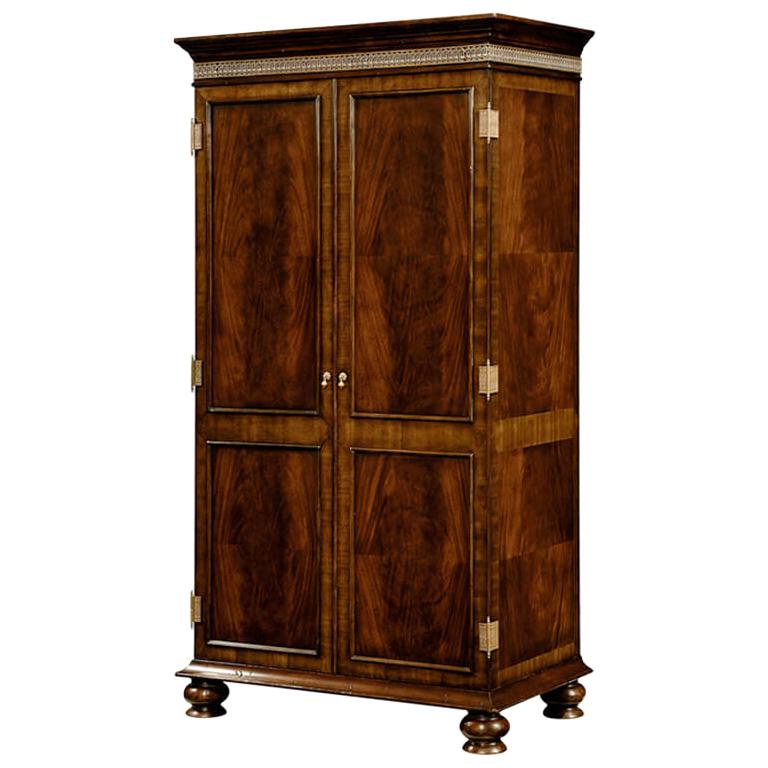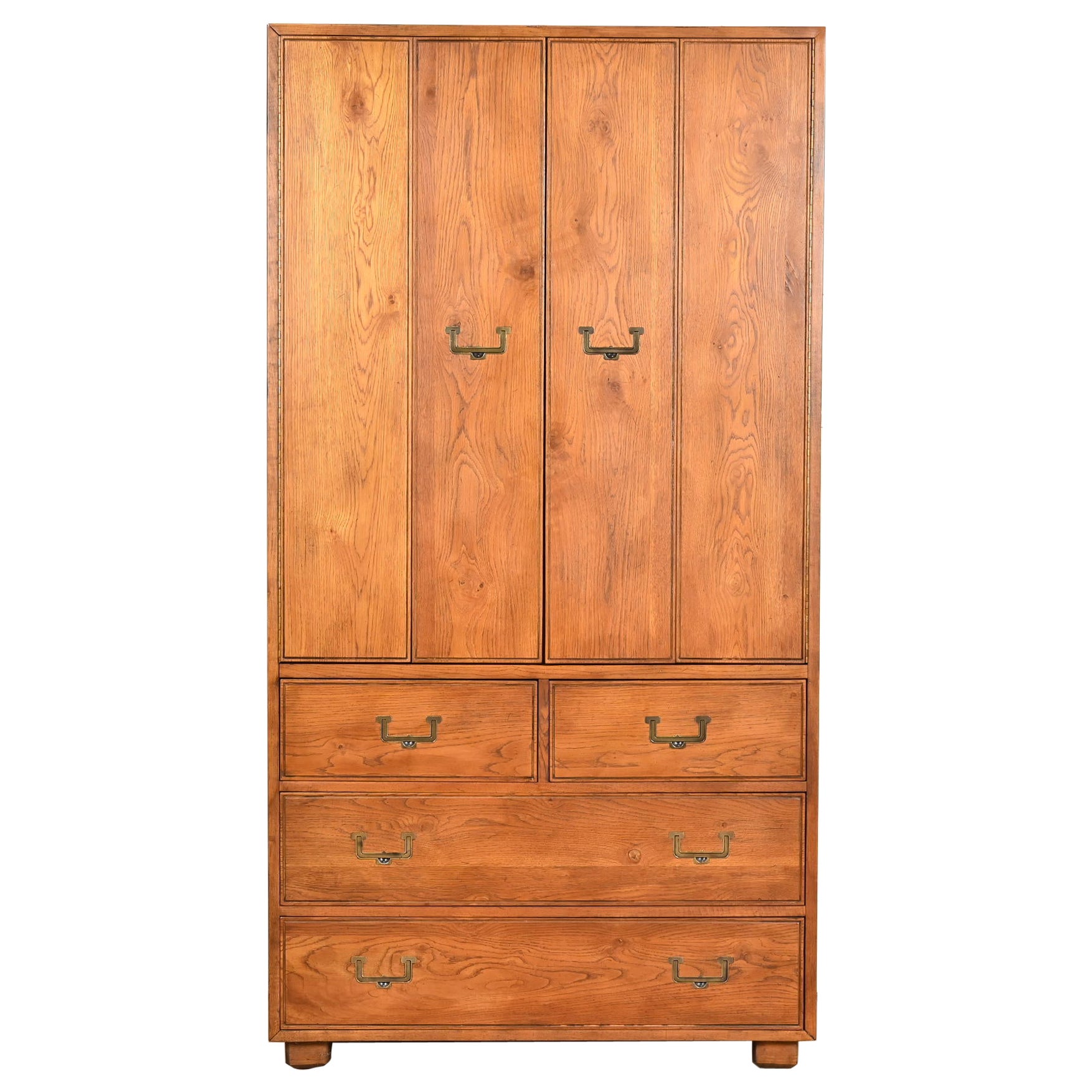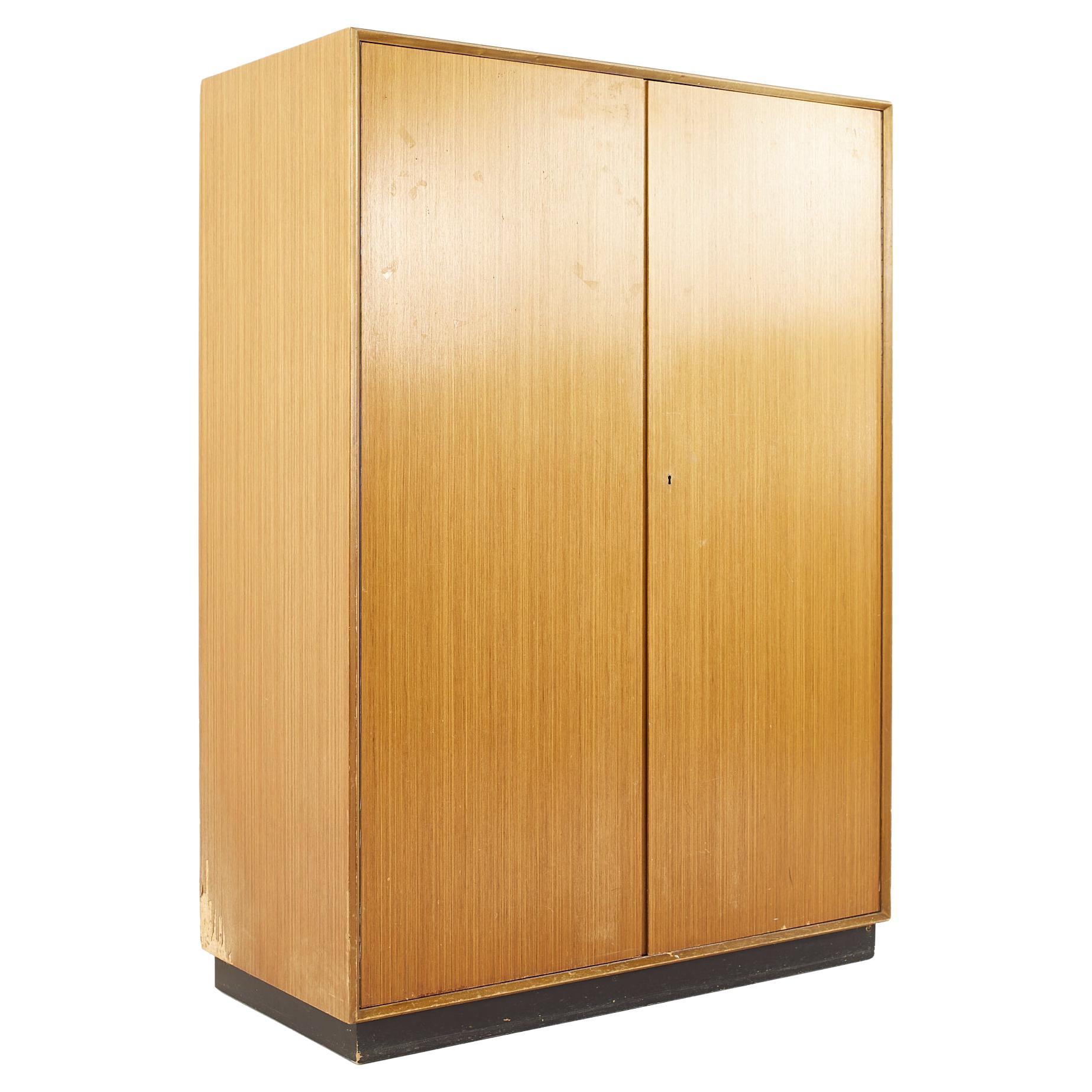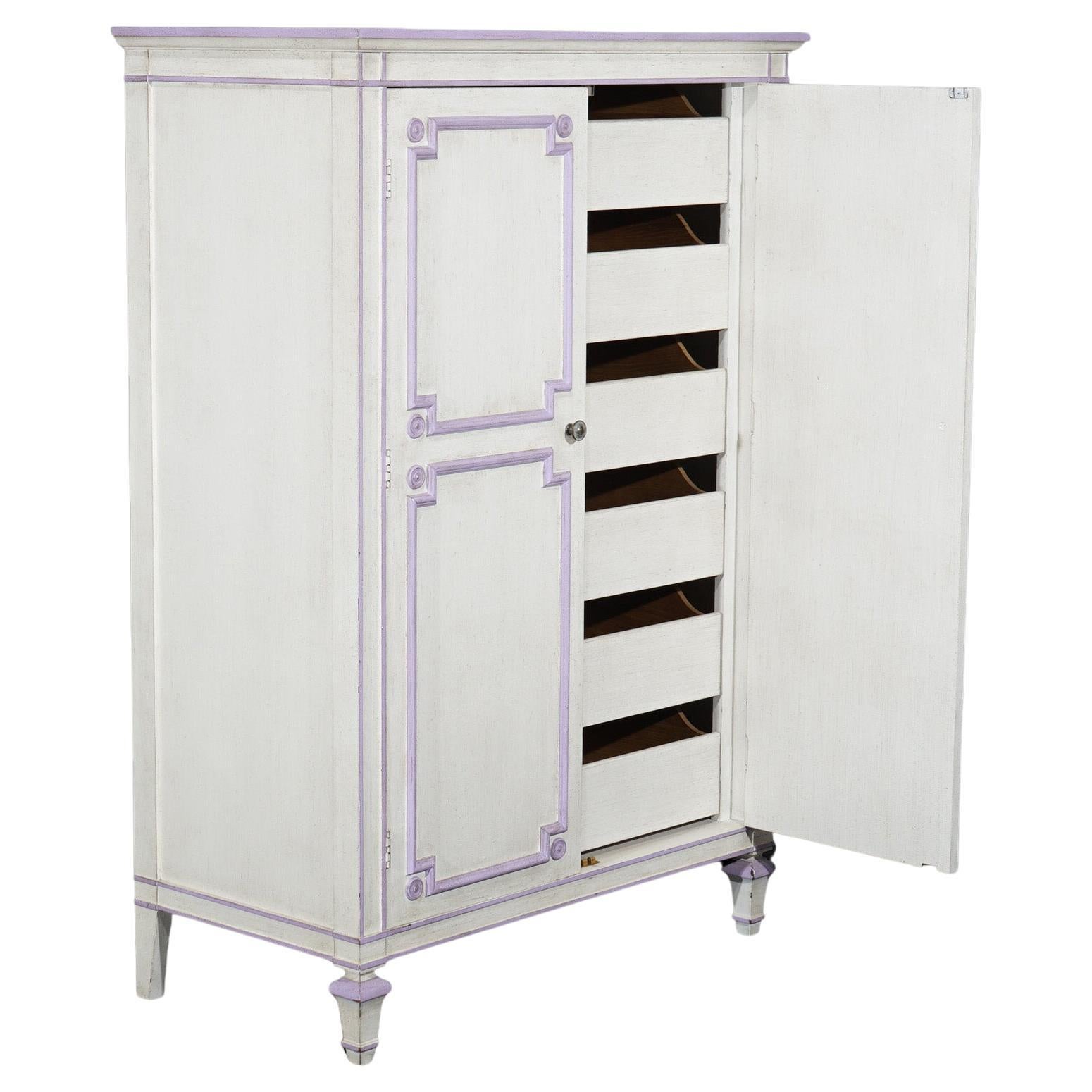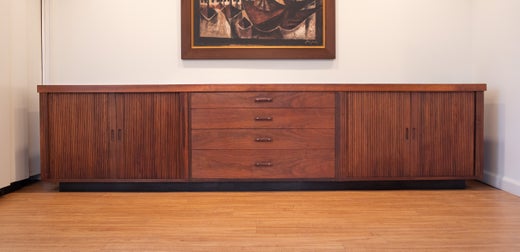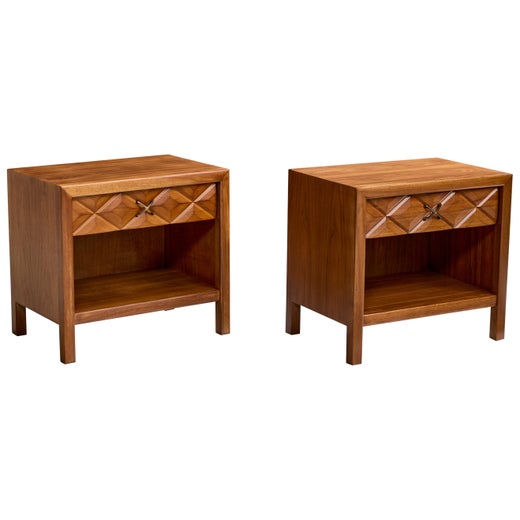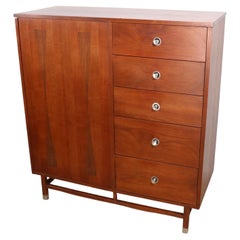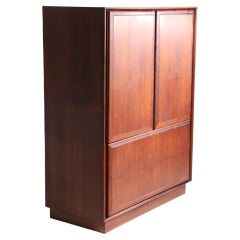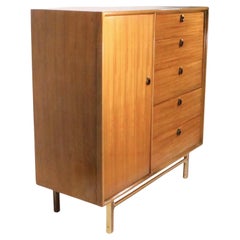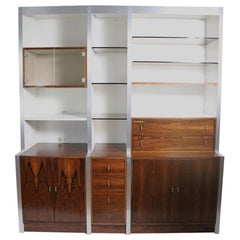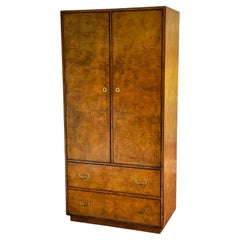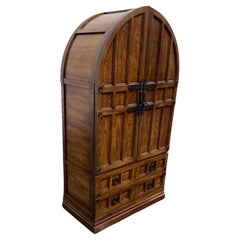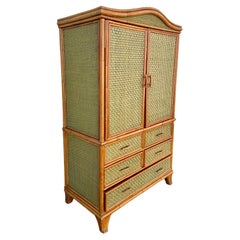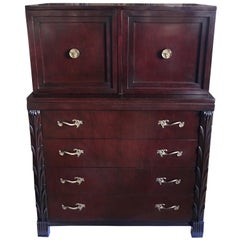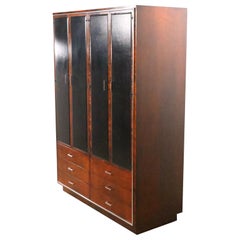
John Stuart for Widdicomb Armoire Wardrobe Chifferobe circa 1960/1970s
View Similar Items
John Stuart for Widdicomb Armoire Wardrobe Chifferobe circa 1960/1970s
About the Item
- Creator:Widdicomb Furniture Co. (Manufacturer),John Stuart (Retailer)
- Dimensions:Height: 66.5 in (168.91 cm)Width: 48 in (121.92 cm)Depth: 19 in (48.26 cm)
- Style:Mid-Century Modern (Of the Period)
- Materials and Techniques:
- Place of Origin:
- Period:
- Date of Manufacture:1960s/1970s
- Condition:Wear consistent with age and use. Very good, original, clean and ready tones condition showing only minor wear, normal and consistent with age. Specifically, inconsequential wear to veneer on side panel at back edge, please see description, and images.
- Seller Location:New York, NY
- Reference Number:1stDibs: LU978734595042
John Stuart
Grand Rapids, Michigan, was once known as “Furniture City” for its local mass-production industry that flourished from the mid-19th century into the early 20th century, led by furniture manufacturers like John Stuart. Stuart’s eponymous company, which would build showrooms in New York and Philadelphia, designed and sold elegant reproductions of various furniture styles, including 18th-century French and English furniture as well as what we now call mid-century modern home furnishings built by European craftsmen in the entrepreneur’s Grand Rapids factory.
In 1845, a British cabinetmaker named George Widdicomb arrived in New York before moving to Grand Rapids. There he set up a small cabinet shop in 1857 with a dozen craftsmen, including his son John Widdicomb. The store quickly found success due to Widdicomb’s English training and the dearth of other quality furniture makers in the region. Toward the end of the 19th century, Grand Rapids had earned an international reputation as a leader of American furniture manufacturing, and while the Widdicomb family would navigate some difficulty after the Civil War, they emerged anew as Widdicomb Brothers and Richards, and then the Widdicomb Furniture Company. Widdicomb’s son started his own company in 1897, the John Widdicomb Company, and in 1929, the Grand Rapids–born John Stuart joined the company as a director.
Stuart, who had been in the furniture industry since 1913, was named president of John Widdicomb Company in the early 1940s and by then had formed John Stuart, Inc., with partner Herbert M. Rothschild. John Stuart, Inc.’s offerings included oak buffets and other dining-room furnishings crafted in the Tudor and Elizabethan styles, with cabinet doors and drawer fronts characterized by meticulously carved natural-world motifs and other decorative flourishes. Stuart also oversaw the design of reproductions of sophisticated walnut and mahogany Queen Anne side tables and dining chairs, with the latter marked by pronounced, vase-shaped curves in the back splats and cabriole legs. In 1952, the manufacturer and distributor’s founder sold the business, including the right to trade under his name, to the John Widdicomb Company.
Find a wide variety of vintage John Stuart furniture on 1stDibs.
Widdicomb Furniture Co.
Admirers of vintage mid-century modern furnishings likely recognize the Widdicomb Furniture Company name for the fruitful partnerships it forged with iconic designers such as Frank Lloyd Wright, T.H. Robsjohn-Gibbings and Mario Buatta. But there is more to the Widdicomb story than the albeit quite covetable sofas and bedroom furniture it produced during the middle of the 20th century.
A wealth of pine and oak forests rendered Grand Rapids, Michigan, a logging center during the 1800s, and it eventually gained recognition for its furniture industry. The American city became a destination for furniture makers who hailed from across the United States and beyond. Furniture maker George Widdicomb emigrated from England to the United States in 1845, eventually setting up a cabinet shop in Syracuse, New York, before moving west to Grand Rapids. There, he opened a shop with his four sons, including John Widdicomb, whose name would help carry the family legacy into the 20th century.
The Widdicomb shop in Grand Rapids prospered, as the patriarch’s formal English training allowed him to produce pieces with superior craftsmanship compared to those of his competitors. Although the Civil War halted business and took the life of one of the Widdicomb brothers, the family’s survivors would start anew as Widdicomb Brothers and Richards, soon renamed the Widdicomb Furniture Company.
John Widdicomb, however, split from the family business in 1897 to create the John Widdicomb Company, where he would go on to focus on Louis XV- and French Provincial-style furnishings. Chairs made in these styles have distinct characteristics, such as floral motifs carved in the frames and gently angled backrests. John's company also remained a family affair: The founder’s son, Harry, assumed control of the company when his father died in 1910, while John's nephew Ralph Widdicombe — who retained the English spelling of his last name and joined the John Widdicomb Company at its start — designed every single piece of the offerings at his uncle's manufacturing outfit until he retired in 1951. Ralph was an internationally distinguished furniture designer whose modern mahogany bedroom suite won first prize at the Paris Exposition in 1900.
The original iteration of Widdicomb, which was helmed by John's older brother William while John ran his own brand, had shifted from making period revival styles of furniture, such as Georgian and Chippendale, to manufacturing modern pieces in the late 1920s. Today vintage Widdicomb seating, tables and other pieces produced during the postwar years are particularly sought after by collectors of mid-20th-century furniture.
In 1959, master woodworker George Nakashima created his Origins collection for Widdicomb when the firm merged with Mueller Furniture Corporation and was known, for around 10 years, as Widdicomb-Mueller. Origins, a revered Shaker-influenced group of nightstands, upholstered lounge chairs, dining-room tables and more, saw Nakashima working with woods like Carpathian elm and laurel in his Pennsylvania studio.
Eventually, the two Widdicomb companies would combine in 1970, operating under the name John Widdicomb Co.
In 2002, the business closed after more than a century of operations, and its assets were acquired by Stickley Furniture. Interestingly, it was not the first time Widdicomb and Stickley overlapped: In the final years of the 19th century, the companies opened a shared storehouse in London, while John Widdicomb and Albert Stickley would travel Europe together for the purposes of research.
Find vintage Widdicomb coffee tables, case pieces, dining chairs and more on 1stDibs.
More From This Seller
View AllMid-20th Century American Mid-Century Modern Wardrobes and Armoires
Metal
Mid-20th Century American Mid-Century Modern Wardrobes and Armoires
Walnut
Mid-20th Century American Mid-Century Modern Wardrobes and Armoires
Aluminum
Mid-20th Century American Mid-Century Modern Shelves and Wall Cabinets
Metal
Mid-20th Century American Mid-Century Modern Commodes and Chests of Drawers
Wood
Mid-20th Century American Mid-Century Modern Dining Room Tables
Ash
You May Also Like
Late 20th Century American Modern Wardrobes and Armoires
Brass
Vintage 1980s American Gothic Wardrobes and Armoires
Iron
Vintage 1970s Philippine Bohemian Wardrobes and Armoires
Rattan, Wood, Paint
Vintage 1950s Georgian Commodes and Chests of Drawers
Brass
Vintage 1960s Mid-Century Modern Wardrobes and Armoires
Walnut
Antique 1880s French Louis XV Wardrobes and Armoires
Oak
